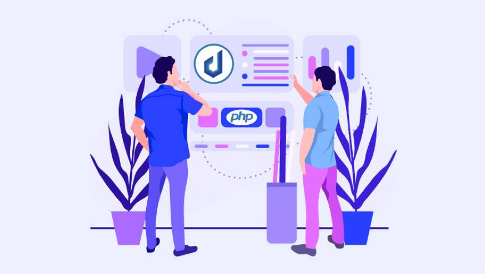Advantages and Disadvantages of Mobile Apps for eCommerce (You Should Know About)
The transformative power of mobile technology has propelled eCommerce to previously unheard heights in the constantly changing world of digital commerce. Notably, the surge in mobile app usage has revolutionized how consumers engage with online stores, do transactions, and, most importantly, how businesses operate to satisfy their needs. You don’t have to take our word for granted, so we backed ideas and insights with compelling statistics that underscore the impact of mobile commerce on the industry.
- The explosive growth of m-commerce: Over the past five years, mobile commerce has witnessed an astounding growth rate, outpacing traditional desktop transactions. It’s predicted that m-commerce sales will take 40.4% of total eCommerce sales by 2024.
- Efficient user retention: A crucial feature of mobile apps is their ability to retain customers and boost engagement. Numerous surveys reveal that mobile app users are three times more likely to revisit an eCommerce platform in one month than website users.
- Better conversion rates: As a rule, mobile apps convert at a 157% higher rate compared to responsive websites. This higher conversion rate translates into greater revenue opportunities for businesses embracing app-based eCommerce strategies.
While the data highlights the undeniable advantages of mobile apps for eCommerce, some challenges demand attention before the development process starts. By dissecting the data and examining the possible drawbacks, this guide provides a comprehensive understanding of the potential problems associated with mobile app development in eCommerce.
Advantages of Mobile Apps That Can Boost Your E-business
In the case of commerce, it’s always better to get more sales and marketing channels than less, but it’s better to see the whole picture before diving into the task. Based on data-driven analysis, we compiled the best benefits of mobile eCommerce apps that make them real game-changers. Thanks to these features, mobile applications have redefined the shopping experience and reshaped the lives of modern-day shoppers.
Enhanced User Experience
The cornerstone of eCommerce mobile apps lies in their user-friendly interface. Unlike responsive websites, apps are tailored to the mobile platform, providing an optimized interface that ensures smoother navigation and effortless interactions. Customers can easily browse through and interact with mobile eCommerce apps thanks to such features as simple navigation and brilliant product categorization. User satisfaction and retention are significantly impacted by the ability to showcase products through high-quality images, clear product descriptions, and straightforward checkout procedures.

The checkout process in mobile apps
The shopping experience can be significantly improved by a user-centric design that utilizes clear call-to-action buttons, useful search functions, and simple payment options, which lowers cart abandonment rates and increases sales.
Convenience and Accessibility
One of the most significant benefits of mobile apps is their unparalleled convenience, i.e., users can shop anytime and anywhere if they have an Internet connection. Smartphone users can browse product catalogs, compare prices, and complete transactions in minutes. Furthermore, mobile apps offer enhanced accessibility for people with disabilities through specialized features like voice commands, screen readers, and more extensive text options.
Additionally, the ability of eCommerce mobile apps to store user preferences and offer personalized recommendations adds another layer of convenience. They save users valuable time by curating product suggestions based on past behavior, purchase history, and location.
Personalization and Customer Engagement
Speaking about personalization, mobile apps analyze user behavior, purchase history, and customer preferences to tailor recommendations, promotions, and offers exactly to the needs of end users. The following features achieve personalization:
- Personalized product recommendations, for example, in a fashion retailer’s app, may suggest outfits or accessories based on a user’s past purchases or browsing habits.
- Personalized offers and promotions provide exclusive deals on items that align with a user’s previously purchased products. This approach significantly stimulates repeat purchases.
- Wishlist and saved items functionality allows users to curate a personalized collection of desired products, for example, to save products for future consideration, revisit favorite products, and make purchase decisions at their own pace.
Improved Performance and Speed
A study by Google revealed that 53% of mobile users abandon websites that take longer than three seconds to load. As a rule, mobile apps show higher performance and faster loading times than mobile websites, contributing to customer retention. Their optimized code and architecture ensure a seamless browsing experience, allowing customers to access product catalogs, browse through categories, and complete transactions quickly and efficiently. Investing in professional mobile app development services can provide a significant advantage for businesses looking to create a customized app that enhances user engagement and drives sales.

Comparison of native and cross-platform applications
Swift loading times for product pages and checkout processes significantly reduce the risk of cart abandonment, maximizing conversion rates and overall sales. The ability to process transactions quickly and securely further cements the app’s position as a preferred shopping channel.
Brand Loyalty and Recognition
The last but not the least advantage of mobile apps is their capacity to act as constant reminders of the brand on a user’s devices. The average user spends 4.2 hours per day using apps, so having a mobile app provides plenty of opportunities for brand exposure and seriously influences customer retention and brand loyalty.
Disadvantages of Mobile Apps that Can Ruin Your Business Effectiveness
Mobile apps for eCommerce do, however, have some drawbacks, just like any other technological advancements. It’s not always possible to avoid them altogether, but your business will surely handle them better if you have a list of potential challenges right from the start. We’ve worked for you and completed all the cons you must overcome.
Development and Maintenance Costs
The development and maintenance of a mobile app, including its regular updates and bug fixes, can be expensive, particularly for small businesses. The design, development, testing, and deployment are not-to-skip stages for making a feature-rich mobile eCommerce app. And each of them requires a specific budget.
According to Clutch, an app development project can cost anywhere from $15,000 to over $350,000+, depending on the complexity and scope of the app. This upfront cost can be a significant obstacle for small businesses or startups with limited resources.
The journey doesn’t end after the app has been launched. Businesses need additional resources for bug fixes, feature upgrades, and performance optimization, so updates and maintenance can be considered recurring expenses. App maintenance typically costs 15-20% of the initial annual development cost. So these costs should also be kept in mind.
Compatibility Issues
Ensuring consistent performance of eCommerce mobile apps across various operating systems like iOS and Android may require additional development efforts. Their unique hardware specifications and screen sizes require thorough testing on multiple devices to identify and resolve compatibility issues.
Another challenge is to comply with various operating system versions since not all users update their devices immediately upon releasing a new OS version. Due to this diversity, developers must ensure that the app performs optimally on older and newer OS versions.
Limited Search Engine Visibility
Although mobile apps for eCommerce offer an excellent user experience, they cannot be accessed through search engines and depend on users discovering and downloading them directly through app stores. This dependency can challenge businesses seeking to reach a broader audience and expand their customer base.
Limited visibility can pose challenges in user acquisition. Attracting a substantial user base can be daunting without a strong brand presence or significant marketing budget. This also affects user retention. If users do not have the app accessible on their devices, they may be less likely to return there for future purchases.
How to Get an eCommerce Mobile App without Breaking the Bank or Compromising Its Functionality?
To get a full-fledged mobile presence, you don’t always have to develop a mobile app from scratch, involving your in-house developer team or outsourcing it to some agency. Searching for an eCommerce platform with a ready-made mobile solution is better.
nopCommerce is one such platform that provides a necessary toolkit for its users. Overall, the nopCommerce mobile app is a powerful solution that capitalizes on the advantages of mobile apps while compensating for their disadvantages. It is a perfect addition for nopCommerce-powered websites that can be managed from the admin panel.

The user-friendly interface of the nopCommerce mobile app
The application features a straightforward and user-friendly interface designed specifically for mobile devices. Thanks to a flexible and highly adaptable framework, it can be easily modified to represent a company’s brand image better. This allows businesses to replace the default logos and even completely change the color scheme in a few clicks. Developed specifically for mobile devices, the nopCommerce app is compatible with iOS and Android operating systems. It means you don’t have to double your development and maintenance costs – the core nopCommerce team took all the necessary measures to counter-balance compatibility issues and deliver a consistent and seamless user experience.
Speaking about costs, the nopCommerce app provides a cost-effective solution compared to native app development. As a ready-to-use mobile app, it requires a one-time payment for existing functionality, i.e., you know what features you’ll get right from the start. And the final price is 10 times lower than an analog you would have developed yourself.
To make it easier to handle ongoing maintenance and updates, the nopCommerce team synchronized the app with the eCommerce website so any changes made to the product catalog or product descriptions are automatically transferred to the app without manual work. With seamless navigation, fast loading times, and personalized product recommendations, this mobile app maximizes customer engagement and boosts eCommerce sales for established online businesses expanding into new channels and markets.
Conclusion
Mobile apps for eCommerce have undoubtedly transformed the way consumers shop and interact with online businesses. Their advantages, such as enhanced user experience, convenience, and personalization, offer significant benefits to companies and customers. Yet, the challenges related to development costs, compatibility issues, and limited visibility require careful consideration before investing in an app-based eCommerce strategy. Thankfully, there are ready-made solutions like the nopCommerce mobile app that can balance the pros and cons of mobile apps and complement the existing online presence.




Leave a Reply